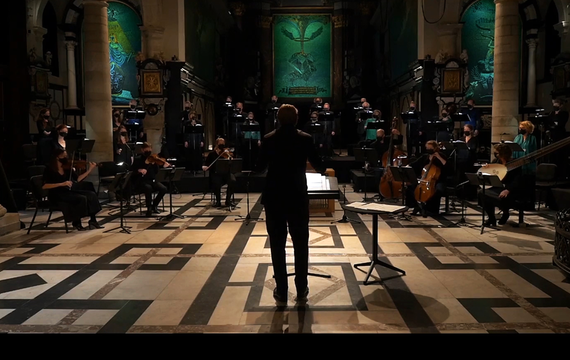- the origin
The Stabat Mater is a melismatic chant (the singing of multiple notes on one syllable) that has been the closing section of the Alleluia during mass - known as the Jubilus - ever since the Carolingian Renaissance
The words were noted in syllabic fashion, creating a rhythmic meter with accents. A wonderful aid to for the memorization of the texts.
- the usage
Contrary to most sequences, the Stabat Mater was not included in the official liturgy during the Middle Ages. Originally it was more of a processional chant accompanying the Way of the Cross. In 1570, the Stabat Mater was used at the Missale Romanum during the death mass and the Friday service after Palm Sunday.
When the Council of Trent banned the performance of the Stabat Mater during the liturgy, it reappeared two centuries later, in 1727, as part of the standard repertoire of the Roman Catholic church and it became part of the celebration of the Seven Sorrows of Mary on September 15.
- the poem
Up to this day, the origin of the moving poem remains a mystery. Some musicologists refer to Jacopene da Todi (ca. 1228-1306), whereas others claim that the Stabat Mater was created by an Italian, French or even English franciscan friar from the 13th century.
Whoever it was, the author has succeeded to perfectly portray the emotions and feelings of Mary, witnessing the death of her son. That explains the popularity of the poem within music: it gives musicians the unique opportunity to develop many different emotional states within one work.
By now, over 400 composers have set the Stabat Mater to music.
- Pergolesi's version
Pergolesi’s Stabat Mater is a commission, composed for a Neapolitan confraternity in order to replace the original composition by Alessandro Scarlatti. That dramatic baroque piece had to make way for a much more sensitive version, and the original hymn to God was replaced by a beautiful duo chant full of expression and variation. Here the music is in service of the expression of the human feelings.

The Stabat Mater is one of the most cited poems in music history, and has been appealing to the imagination ever since it's origin in the Middle Ages. It is a source of inspiration of all times, for the past, but also for the future. The theme of a weeping Mary at the crucifixion of her son Jesus, or more universally, a mother mourning her child, is relatable and moves us all.
The text incited many composers to the creation of extraordinary and intense music. A brief history:
Listen to this beautiful version of Pergolesi's Stabat Mater, with Philippe Jaroussky & Emöke Barath...
Info concert

Podium 19: Via Crucis
Friday 26 February | 13:50 | Podium 19 - digitaalVia Crucis, Christ’s way of the cross, from a female point of view - available until 28 March on Podium 19

Podium 19: Via Crucis
Friday 26 February | 13:50 | Podium 19 - digitaalVia Crucis, Christ’s way of the cross, from a female point of view - available until 28 March on Podium 19

Via Crucis
Thursday 29 May | 20:00 | Eglise Saint Jacques-sur-Coudenberg - Brusselschrist’s way of the cross, from a female point of view - with music by Buxtehude, Pergolesi, Caroline Shaw, Anna Thorvaldsdottir & Patricia Van Ness
